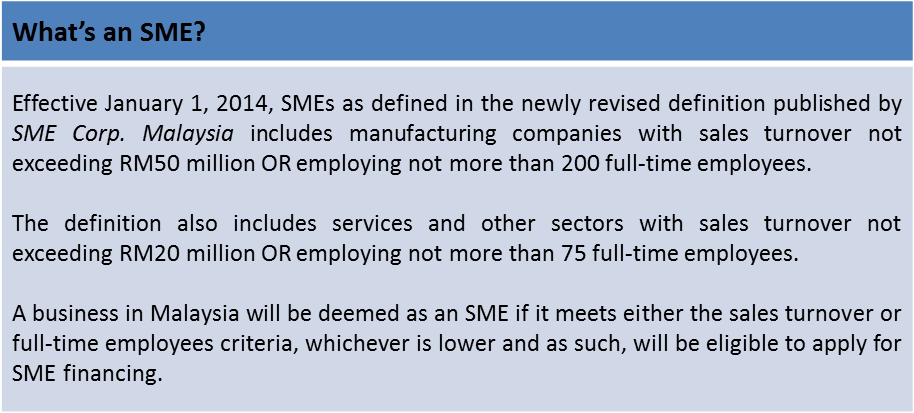Keeping SMEs in Malaysia afloat
 Small and medium enterprises (SMEs) play a significant role in the development of any country’s economy, but the magnitude of this significance is perhaps most prominent in the rebuilding of Japan’s economy after World War II.
Small and medium enterprises (SMEs) play a significant role in the development of any country’s economy, but the magnitude of this significance is perhaps most prominent in the rebuilding of Japan’s economy after World War II.
During that trying time, the Japanese economy was slowly picked up by SMEs, eventually making it the second-largest economy in the world .
Just like any ecosystem, weaker and smaller entities often play a much greater role than estimated. In any robust economy, huge corporations depend on SMEs to complete their manufacturing cycles, either as suppliers or distributors.
In the 2012/13 SME Annual Report released by the Secretariat of the National SME Development Council on September 24, 2013, SMEs make up a staggering 97% of 662,939 companies in Malaysia.
The same report also shows a preliminary contribution to overall gross domestic product (GDP) of 32.7% in 2012. The government, through its SME Masterplan (2012 – 2020) aims to raise the contribution of GDP to 41%, employment from 59% currently to 62%, and exports from 19% to 25% by the year 2020.
What are the benefits for SMEs?
Recognising the importance of SMEs to Malaysia’s economy, Prime Minister Datuk Seri Najib Tun Razak in his announcement of Budget 2014 has allocated RM2.6bil for 13 specific programmes for SME development.
These programmes include the establishment of the National Entrepreneur Development Office under the National Strategy Unit, Finance Ministry, the establishment of Global Innovation and Creativity Centre (MaGIC), the setting up of a one-stop centre to host a database of entrepreneurs, intellectual property registration and patenting, and funding facilities.
Additionally, under the Green Lane Policy programme, the government also provides a subsidy on interest rate of 2% or a maximum of RM200,000 per year and stamp duty exemption for loan agreements under the soft loan incentive scheme.
How about additional financial boosts?
These new regulations and programmes encourage SMEs to thrive in the Malaysian economy. However, outside of these programmes, most of these SMEs – more than anything – need better access to finances to kick-start their enterprises.
One of the most notable financing programmes according to the 2012/13 SME Annual Report is the Soft Loan Scheme for SMEs (SLSME) by the Malaysian Industrial Development Finance Berhad (MIDF).
Launched in December of 2011, this financing scheme aims to assist existing, as well as, newly start-up enterprises in the manufacturing, manufacturing-related services, and services (excluding insurance and financial services) sectors in project, fixed assets, and working capital financing. For more details of the scheme, go to MIDF’s website here.
Under the Budget 2014, the government has also allocated RM50mil under the Graduate Entrepreneurship Fund, managed by SME Bank to reduce graduate unemployment. The fund will provide soft loans of up to RM500,000 at an interest rate of 4%.
To increase bumiputera equity ownership, SME Bank will also establish Bumiputera Equity Fund (EquiBumi) with RM300mil allocated from Budget 2014, to provide loans to credible bumiputera companies to take over listed companies or companies with potential to be listed on Bursa Malaysia.
SMEs in Malaysia are not limited to these schemes and programmes however, as there are other various sources of financing that can be availed to, such as:
- Banking institutions
- Development financial institutions
- Venture capital companies
- Private equity
- Leasing and factoring companies
- Special funds and schemes by the government and Bank Negara Malaysia (BNM)
Additionally, channels including Bank Negara Malaysia’s Laman Informasi Nasihat dan Khidmat (BNMLINK), the One-Referral Centre at SME Corporation Malaysia, and Association of Banks in Malaysia (ABM) provide SMEs with financial advisory and information regarding programmes and schemes.
With the assistance readily available, SMEs and aspiring entrepreneurs can step out of their comfort zone and create their economic growth, as well as, contribute towards the Economic Transformation Programme in realising the nation’s aspiration of attaining high-income economy status in 2020.










